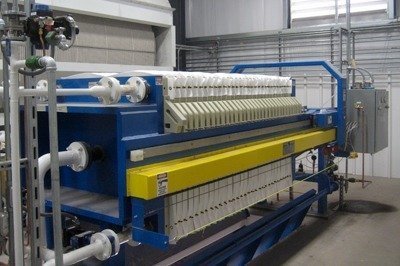How To Choose the Right Filter Cloth for Your Membrane Filter Plate?

How do you know which filter cloths to use with your membrane filter plate? You need to choose the right filter cloth to ensure that your filters are effective and also long-lasting. Read this guide on how to choose the right filter cloth for your membrane filter plate, so you can ensure your filters perform optimally from the very beginning! When choosing the right filter cloth, you should consider both the membrane type and membrane area of your filter plate, as well as the specific features of your application.
Types Of Filter Cloths
There are a few different types of filter cloths that are available on the market today. The most common type is the polyester filter cloth. This type of filter cloth is best suited for applications where solids need to be removed from liquids. Another type of filter cloth is the nylon filter cloth. This type of filter cloth is best suited for applications where finer particles need to be removed from liquids. The last type of filter cloth is the PTFE filter cloth. This type of filter cloth is best suited for applications where chemicals need to be removed from liquids.
When choosing a filter press machine, it is important to select one that will be able to accommodate the specific needs of your application.
The Importance Of The CEN Standard
CEN, or the European Committee for Standardization, is an organization that sets voluntary standards for products and services in 28 European countries. For a filter press machine to be sold in Europe, it must meet the CEN standard.
The CEN standard is important because it assures buyers that the filter press machine they are purchasing is safe and effective.
There are two main types of filter press machines: recessed plate and membrane plate.
Recessed plate filter press machines have been around longer and are typically used in industrial applications. Membrane plate filter press machines are newer and more commonly used in municipal wastewater treatment plants.
Filter cloths are an important part of both types of filter press machines.
What Materials Make Up A Good Filter Cloth?
A good filter cloth is made of natural fibres such as cotton, linen, or wool. Synthetic fibres such as polyester, nylon, or acrylic can also be used. The cloth should be free of impurities and have a tight weave. It should also be durable and able to withstand high temperatures. When choosing a Filter Cloth Selection, it is important to consider the type of liquid you will be filtering. Certain liquids like petroleum require a different kind of filter than others like water.
Each different cloth has its strengths and weaknesses so it’s important to choose one that best suits your needs based on what kind of material you’re trying to filter out. For example, if you are using gas with metal particles in it, then glass fibre mesh would be a better choice because it is denser than other types of filters.
It’s easy to find companies that supply these materials online. Look up filter presses and see what companies offer this service!
Understanding Micro Porosity In Washable Filter Cloths
Washable filter cloths are an excellent choice for a variety of applications because of their durability and ease of cleaning. However, it is important to understand how microporosity can affect the performance of your filter press. Microporosity is the size and distribution of pores in the fabric that allow liquids and gases to pass through. The smaller the pores, the higher the filtration efficiency. Conversely, when large pores make up the majority of the surface area, there will be more leakage. With more leakage, you may need to run your machine longer or use a higher pressure setting. It’s also important to consider where on the filter plate you plan on using the cloth.
What Size Should My Membrane Hole Be?
The size of your membrane hole will be based on a variety of factors, including the type of liquid you are filtering, the desired flow rate, and the number of suspended solids in your liquid. A good rule of thumb is that the membrane hole should be 10-20% smaller than the particle size you are trying to remove.
What Are My Options for Materials? (three sentences): The most common materials used for Membrane filter plate are polyester, nylon, and polypropylene. Each material has its advantages and disadvantages, so it is important to choose the right one for your application.
What About Pre-Treatment? (two sentences): In some cases, it may be necessary to pretreat your filter cloth before use.
Understanding Different Fiber Types And Their Properties
Polypropylene (PP) is a synthetic fibre that offers good resistance to aqueous solutions and strong oxidizing agents. It also has excellent heat resistance, making it ideal for hot filtration processes. Polyester (PE) is another synthetic fibre that is commonly used in filter cloths. It has good resistance to acids and alkalis, making it a versatile option for a variety of applications.




